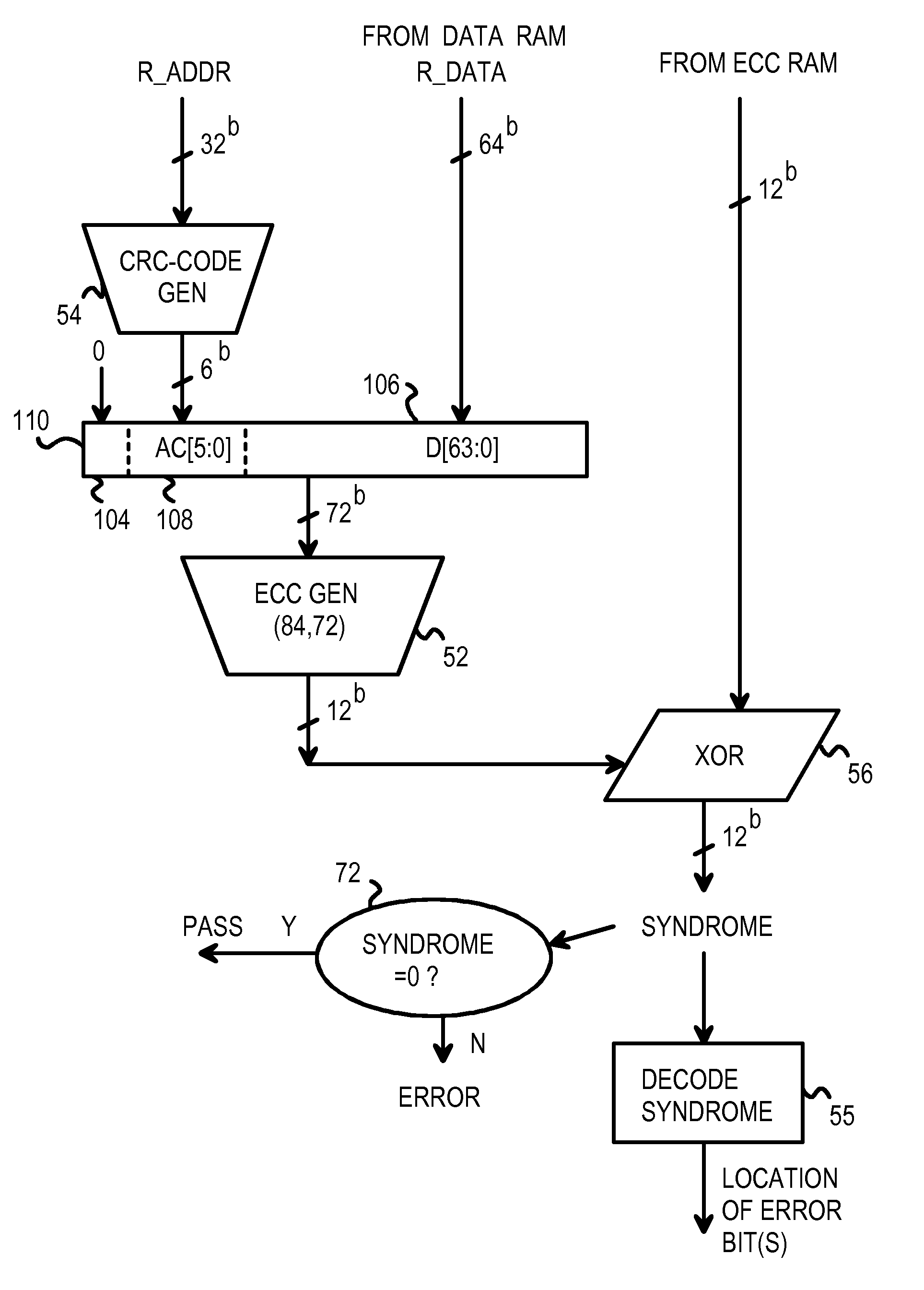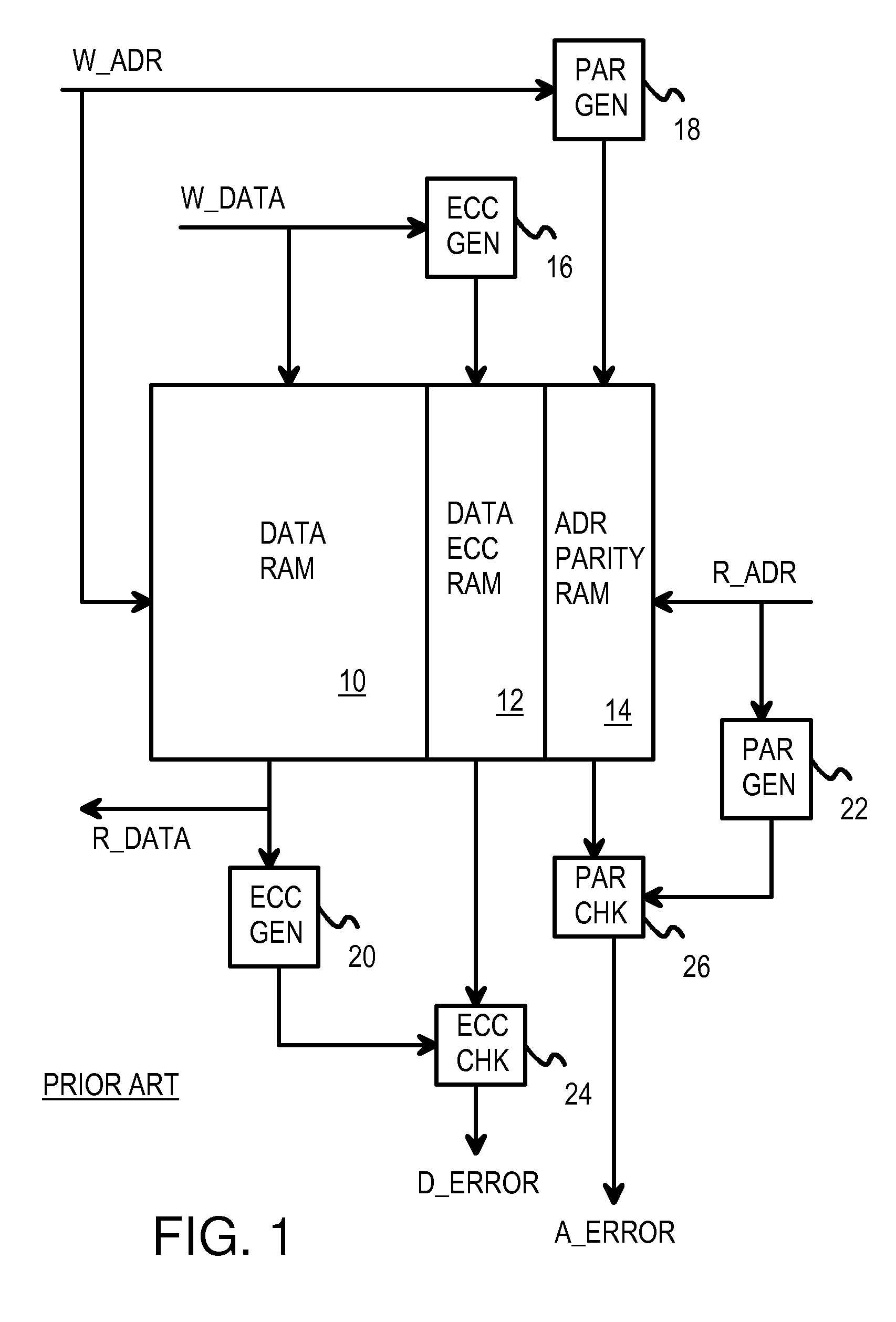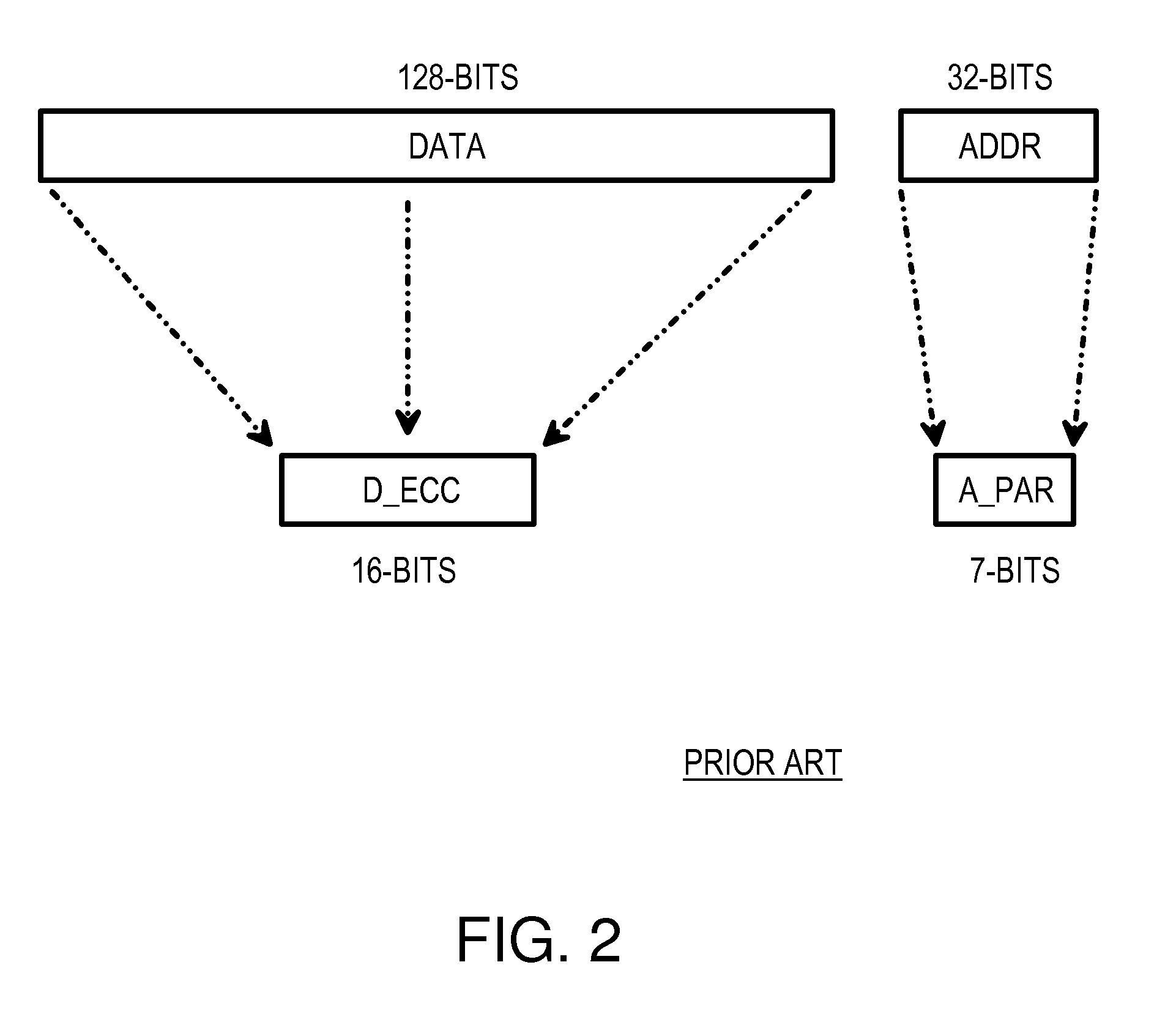Subsystem and method for encoding 64-bit data nibble error correct and cyclic-redundancy code (CRC) address error detect for use in a 76-bit memory module
a memory module and data nibble technology, applied in the field of error detection and correction, can solve the problems of requiring too much additional redundant storage, software and users want to have a much larger mean time between undetected errors, and intolerant current software of hardware errors
- Summary
- Abstract
- Description
- Claims
- Application Information
AI Technical Summary
Benefits of technology
Problems solved by technology
Method used
Image
Examples
Embodiment Construction
[0035]The present invention relates to an improvement in memories with error-correction codes. The following description is presented to enable one of ordinary skill in the art to make and use the invention as provided in the context of a particular application and its requirements. Various modifications to the preferred embodiment will be apparent to those with skill in the art, and the general principles defined herein may be applied to other embodiments. Therefore, the present invention is not intended to be limited to the particular embodiments shown and described, but is to be accorded the widest scope consistent with the principles and novel features herein disclosed.
[0036]FIG. 4 shows a 76-bit memory module using x4 DRAM chips. A memory system may be accessible as 64-bit data words. Memory module 100 outputs 64 data bits over a bus that connects to a motherboard through edge-connector leads on the bottom edge of memory module 100. These edge-connector leads are inserted into ...
PUM
 Login to View More
Login to View More Abstract
Description
Claims
Application Information
 Login to View More
Login to View More - R&D
- Intellectual Property
- Life Sciences
- Materials
- Tech Scout
- Unparalleled Data Quality
- Higher Quality Content
- 60% Fewer Hallucinations
Browse by: Latest US Patents, China's latest patents, Technical Efficacy Thesaurus, Application Domain, Technology Topic, Popular Technical Reports.
© 2025 PatSnap. All rights reserved.Legal|Privacy policy|Modern Slavery Act Transparency Statement|Sitemap|About US| Contact US: help@patsnap.com



